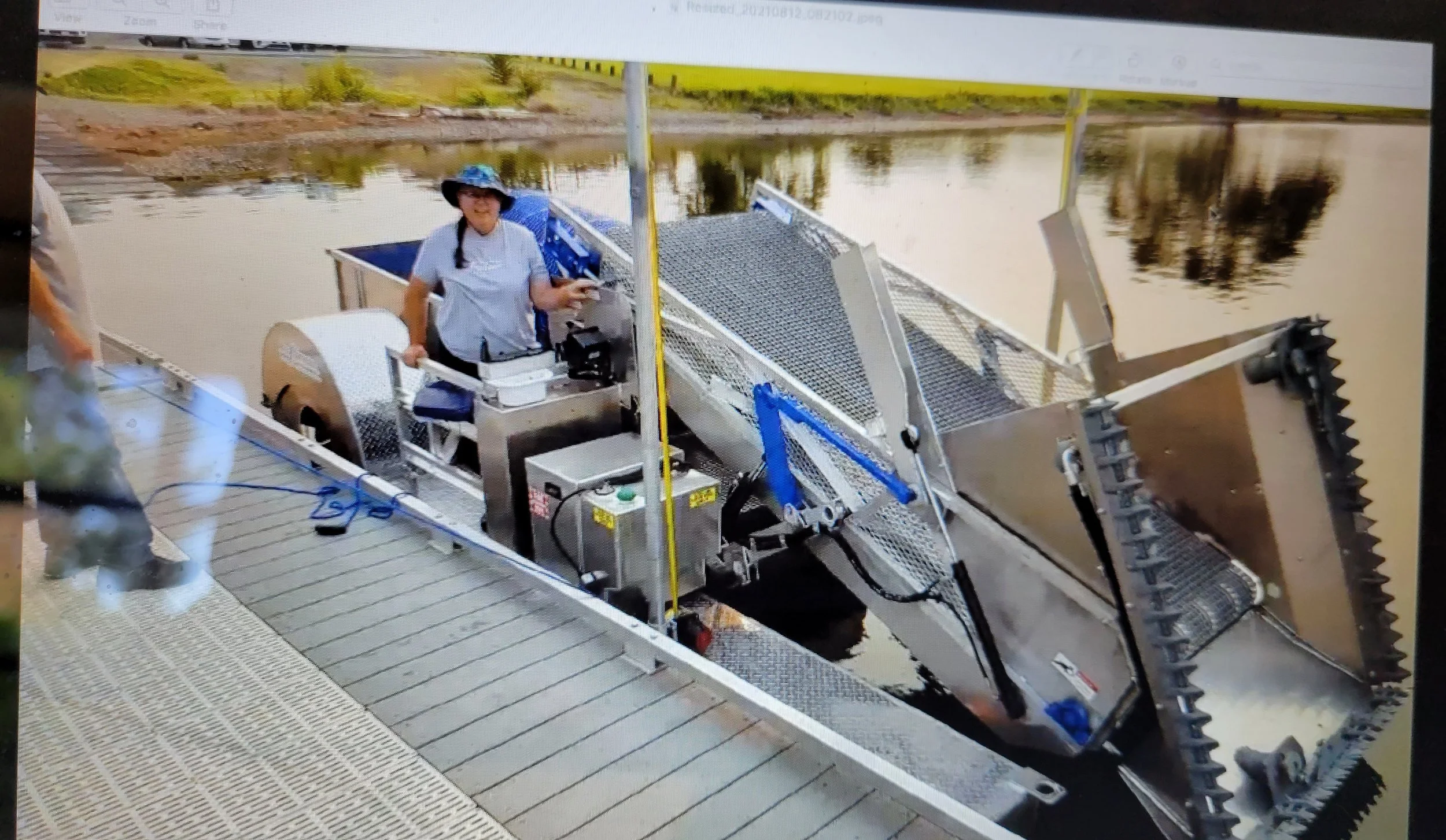
Water Stargrass
In the lower Yakima River, lack of scouring spring floods, low summer flows, and abundant nutrients have created conditions for an aquatic native plant, water stargrass, to become much more abundant. Dense mats of water stargrass slow down the water causing it to warm, trap fine sediment and grow over spawning gavels inhibiting their use by fall chinook, create habitat for invasive species, and cause dramatic swings in dissolved oxygen levels, all of which create poor to lethal conditions for our native salmonids. Benton Conservation District has lead the charge from the early alarm on this nuisance plant taking over the lower Yakima River, since then many partners have been working to figure out how to handle this extensive issue. In 2024, a drought lead to increase efforts to combat the plant and the momentum isn’t slowing down. The Water Stargrass Coalition is actively and effectively identifying the programmatic approach and actions needed to return the lower river to past conditions.
Future efforts and programs
Maintaining the momentum that BCD has established, a collective group has convened across all stakeholders. The Water Stargrass Coalition has rapidly identified an pushed for additional support to ramp up efforts to combat the biomass concerns raised by WSG. In 2025, additional harvesters were purchased and planning began to pilot creative ways to approach WSG in the lower Yakima.
MCF directly supported and implemented a hand-harvest effort in 2024 that saw roughly 31 tons of WSG removed from side channels and edge habitat. For perspective, this was in roughly 2 acres of space and the crew did not get to all the biomass. It is estimated from a 2022 mapping effort done my MCF, that there is roughly 14000 acres of dense WSG in the lower Yakima river.
With the extent of WSG and the impact to fish, infrastructure, water quality, and water supply; it is imperative to the basin to ramp up efforts and create mechanisms that help restore lower river function and water delivery. This project and projected efforts are another great example of how integrated, collaborative, and stakeholder diverse efforts in the Yakima basin must be in order to achieve long-term sustainability, resilience, and resistant in face of a changing world.






